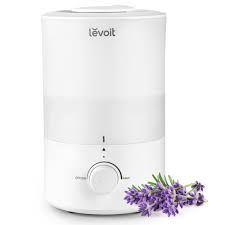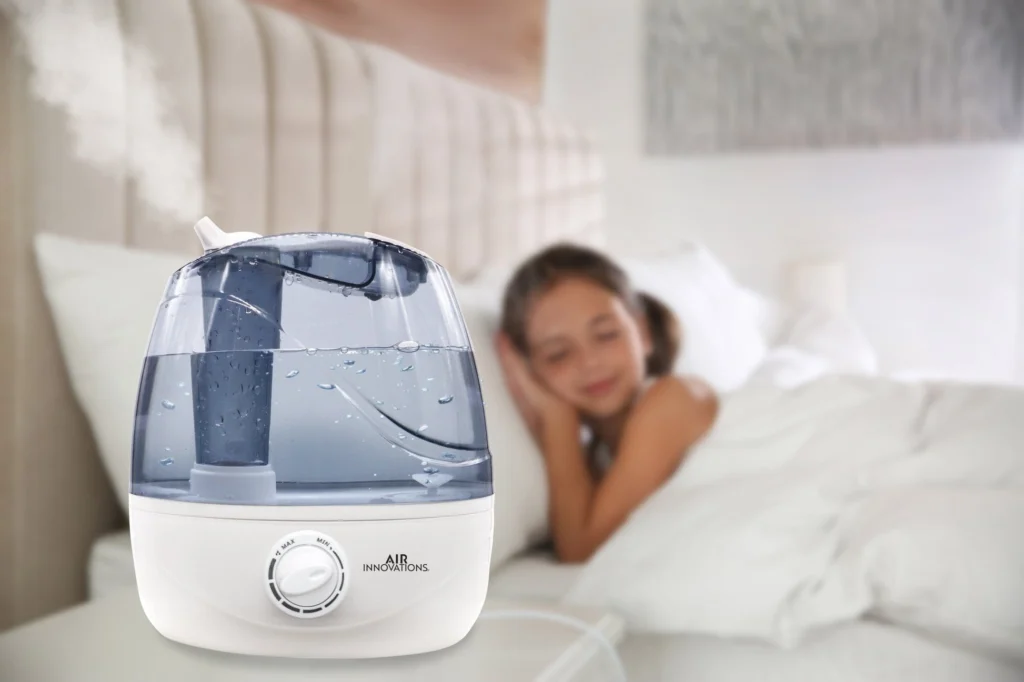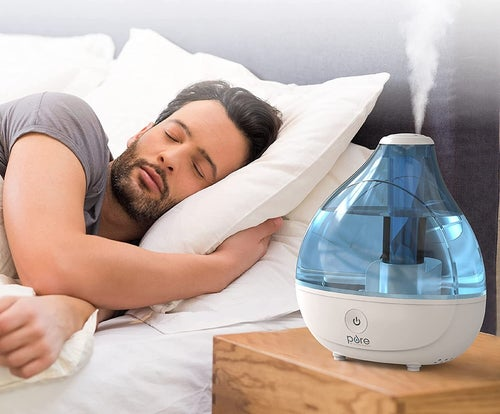Top Benefits of Using a Furnace and Whole-Home Humidifier Together
What is a humidifier?
Humidifiers are devices that add moisture to the air to prevent dryness that can cause irritation in many parts of the body. Humidifiers can be particularly effective for treating dryness of the skin, nose, throat, and lips. They can also ease some symptoms caused by the flu or common cold.
But overusing humidifiers or not cleaning humidifiers properly can potentially worsen respiratory problems and cause other health conditions.
What can I use a humidifier for?
Humidity acts as a natural moisturizing agent that can relieve dryness, especially when it’s cold outdoors when the air is dryer. For this reason, humidifiers are often used to relieve:
- dry skin
- sinus congestion/headache
- dry throat
- nose irritation
- bloody noses
- irritated vocal cords
- dry cough
- cracked lips
You may be prone to these discomforts when the air in your home is dry. This is especially common during winter months or when an air conditioner is being used during the summer.

Types of humidifiers
The type of humidifier you choose depends on your preferences, budget, and the size of the area you want to add moisture to. The five types of humidifiers include:
- central humidifiers
- evaporators
- impeller humidifiers
- steam vaporizers
- ultrasonic humidifiers

Controlling humidity levels
Adding humidity to the air may be beneficial, but too much humidity can cause health issues. High humidity levels can worsen respiratory problems and create uncomfortable dampness in the air. This can encourage the growth of:
- dust mites
- mildew
- mold
- harmful bacteria
How to safely use a humidifier
Before operating a humidifier in your home, you should be aware of some of the risks and safety precautions of these devices to avoid adverse health reactions.
Manage humidity
Don’t add too much moisture to a room. You don’t want the humidity in a room to be at more than 50 percent. When the humidity exceeds this percentage, bacteria and mold can grow. This can trigger respiratory conditions like allergies and asthma.
Ideally, the humidity of a room should be between 30 and 50 percent. You can purchase a hygrometer to measure the moisture in your home.
Only run your humidifier when you need it, not all of the time, to keep humidity levels down.
Use distilled water
Another health risk when operating a humidifier relates to the particles other than water emitted into the air. Unhealthy mineral particles can be released by a humidifier, particularly with cool mist machines.
Distilled water has fewer minerals in it and can be purchased for use in your humidifier.

Keep your machine clean
You should always clean your humidifier after every use and make sure the water tank gets completely dried before using it again.
Rinse and replace the water in your humidifier’s tank each night to avoid using old standing water that may contain molds or other bacteria or fungi.
You may notice white buildup within the humidifier. This is known as scale and could be emitted into the air and cause particles to enter the lungs, leading to health problems.
To avoid or remove scale or mold, clean your humidifier out every few days with a water and vinegar or hydrogen peroxide mixture or with another cleaning solution recommended by the manufacturer.
You should consider replacing an older humidifier if it hasn’t been cleaned regularly.
Replace filters regularly
Some humidifiers require filters or have other parts that need to be cleaned or replaced. For example, replace the filter in your central humidifier regularly according to the manufacturer’s instructions.
Keep interior doors open
To avoid over-humidifying a room, make sure to keep the room’s door open to allow air to flow in and out of the space.
Use good judgment when using a humidifier in a child’s room
Not all humidifiers are alike, so you should consider the safest option if it’ll be operated in your child’s room at night.
A humidifier that boils or heats the water inside of it might pose a safety risk. On the other hand, cool mist humidifiers can emit more harmful elements into the air, so you need to keep it clean.
Recommendations for humidifiers
There are several types and brands of humidifiers available. Before purchasing one, it’s important to determine which type best suits your needs.
Here are a few tips to consider when shopping for a humidifier:
Decide what type of humidifier works best in your space
Cool mist humidifiers are ideal for use in children’s rooms or areas where the device may be accidentally touched. Warm mist humidifiers, which heat the water before releasing mist, may provide safer-feeling air but are not recommended for use around children.
• Read humidifier reviews and ratings before making a purchase
A high-quality humidifier should operate efficiently and be easy to clean and maintain.
• Consider the features and settings available
Think about whether you need the ability to adjust mist output or other settings to suit your preferences.
• Measure the room where the humidifier will be used
Choose a unit that is appropriately sized for the space to ensure effective performance.

Humidifier Installation Process
Evaluate Home & HVAC System
We assess the size of your space and the type of furnace or air handler to recommend the right humidifier model (bypass, fan-powered, or steam).Shut Down HVAC Power
For safety, we turn off power to the furnace or air handler before installation.Mount the Humidifier Unit
We install the humidifier on the supply or return plenum of the ductwork, depending on the model and layout.Connect Water Supply Line
A water line is connected from the household plumbing to the humidifier, typically through a saddle valve or direct connection.Install Drain Line
We connect a drain line to safely remove excess water and prevent buildup or leakage.Wiring & Controls
The humidifier is wired to the HVAC system and controlled via a humidistat or smart thermostat integration.Test & Set Humidity Levels
We power on the system, test functionality, and calibrate the humidistat for optimal indoor humidity (typically 35–50%).
Humidifier Repair & Troubleshooting
Our certified technicians quickly diagnose and repair all types of whole-home humidifiers, including Aprilaire, Honeywell, Lennox, and more.
No Moisture Output
We inspect water lines, solenoid valves, and control boards to identify blockages or electrical faults.Leaking Humidifier
Commonly caused by clogged drain lines, cracked housings, or stuck valves—we repair or replace faulty parts to stop leaks.Water Not Entering the Unit
We check saddle valves, water pressure, and float assemblies to restore proper water flow.Control Issues or Humidistat Malfunction
If your humidistat isn’t responding or reading levels incorrectly, we test the wiring and sensor, then recalibrate or replace it.Unusual Odors or Mold Concerns
We clean or replace water panels and recommend regular maintenance to prevent microbial growth.
Keep Your Humidifier Running Smoothly
Replace water panels or pads annually.
Clean mineral buildup from components.
Check for leaks or clogs during seasonal HVAC maintenance.
Use filtered or softened water in hard water areas.
FAQs
Do I need a whole home humidifier with my furnace?
If you find the air in your home during winter to be dry and uncomfortable, then a whole home humidifier that is connected to your furnace system, could be a good solution for you. A whole home humidifier allows you to increase the relative humidity in your home, adding moisture when it’s needed.
Can I install a whole home humidifier myself?
It is recommended that a whole home humidifier be installed by a professional HVAC technician.
What is relative humidity?
Humidity is the amount of water vapour in the air and relative humidity, or RH, is a percentage that reflects the amount of water vapour in the air compared to the maximum possible at that temperature and pressure. Health Canada recommends that the relative humidity levels in your home should be kept below 50% in the summer and usually between 30-35% in the winter,1 however, the recommended percentage may vary based on actual outdoor temperature.
Does a furnace humidifier cause mold?
Increasing the humidity too much could lead to condensation on surfaces as well as inside your home’s walls and foundational structure that cannot be seen. This could lead to mold growth as well as an increase in mites in your home.
If you have condensation on your windows, this is an indication that the humidity in your home could be too high.
What should I set my humidifier to in the winter?
The relative humidity in your home should vary with the temperature outside. The colder the weather, the lower your relative humidity should be. Health Canada recommends keeping the relative humidity in your home in the winter between 30-35%2.
How can I tell if my whole home humidifier has stopped working?
If your home is unable to maintain your desired relative humidity levels, it could mean your whole home humidifier is not functioning properly and it may be time to call for an inspection.
How often should I change my humidifier filter?
The humidifier filter, also known as the evaporator pad, should be cleaned or changed at least once a year. It is possible that you will have to change it more frequently if the humidifier is operating a lot or due to other factors.
What happens if I don’t change my humidifier filter?
Your humidifier could run less efficiently, or it could develop a leak if mineral deposits block the flow of water.
Should I turn off my humidifier in the summer?
It is not necessary to turn your humidifier off
What humidity should my house be?
Health Canada recommends that the relative humidity levels in your home should be kept below 50% in the summer and usually between 30-35% in the winter, however the exact percentage will depend on the actual outdoor temperature.
Can a whole home humidifier help my respiratory symptoms?
If you have a respiratory infection or virus, managing your home’s humidity levels could help alleviate respiratory symptoms. While humidifiers do not remove viruses from an indoor environment (in your home), they could impact the duration viruses are suspended in the air and therefore potentially decrease your exposure to them.
According to Health Canada, low humidity levels may provide an appropriate environment for the survival of some types of viruses. By managing the humidity levels in your home, you could reduce the survival of some types of viruses present in your home.
Can a whole home humidifier help with static electricity problems?
Relative humidity levels below 30% could lead to an increase in static electricity. A whole home humidifier could help eliminate those surprising shocks!
Testimonials
Honest Reviews from our Customers

Jane Anderson
Homeowner, San Diego
Ready to transform your outdoor space?
Contact us today to schedule a consultation or to learn more about our services.

